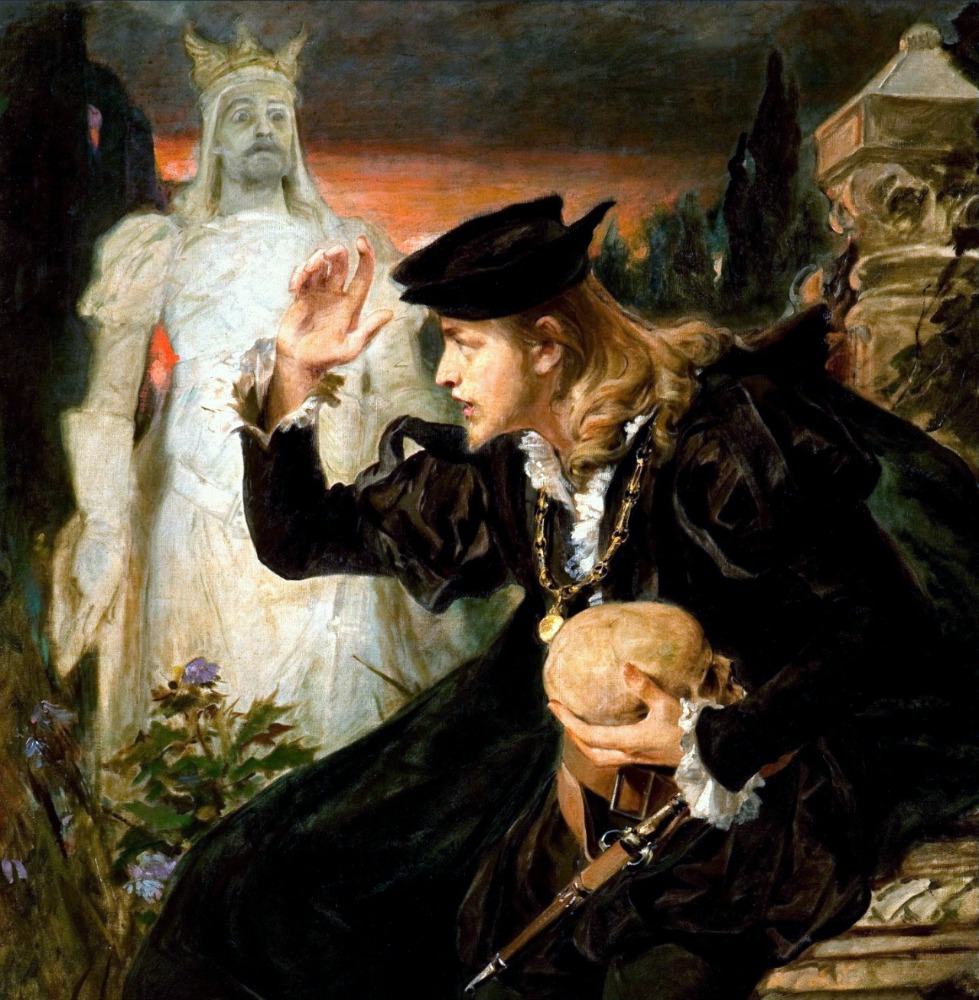As the Sun sets, its light extinguished by the rising horizon, darkness descends and a looming oblivion pulls all in sight into its oppressive grip. The witching hour is close. Buildings and places that are innocuous by day assume a sinister veil, as dreams and nightmares occupy the minds of those sleeping nearby. Across Europe, some of the most haunted castles come to life, their corridors ringing with the shrieks of long-dead residents, dungeons still echoing with the moans of its last victims, the gardens trampled by the memory of demonic animals.
For ghost hunters, the thrill of catching a glimpse of these ghostly spectres is too much to bear – as the night descends and the castles unveil their dark reality and the spectre-seekers descend, hoping to catch a vital piece of evidence to prove the existence of our paranormal companions.
Some ghost stories concern the famously wronged of history, such as the tale of the Pink Lady of Stirling Castle, rumoured to be the ghost of Mary Queen of Scots, who was crowned there in 1543. The Green Lady who also walks Stirling’s corridors is said to have been Mary’s maidservant before she moved into the spiritual realm.
Haunting isn’t the only source of fear in these castles; in the case of Corvin Castle in Romania, it’s the rumoured visit of one Vlad the Impaler that brings a chill to visitors. A reconstructed torture chamber adds to the creepy atmosphere.
Elsewhere, it is the spectres of long-forgotten maids, footmen and peripheral aristocracy that play a part in some of the most evocative ghost tales. Whether you believe in ghosts or not, the spooks most often stem from legends and historical stories which add colour to any visit to these looming fortresses.
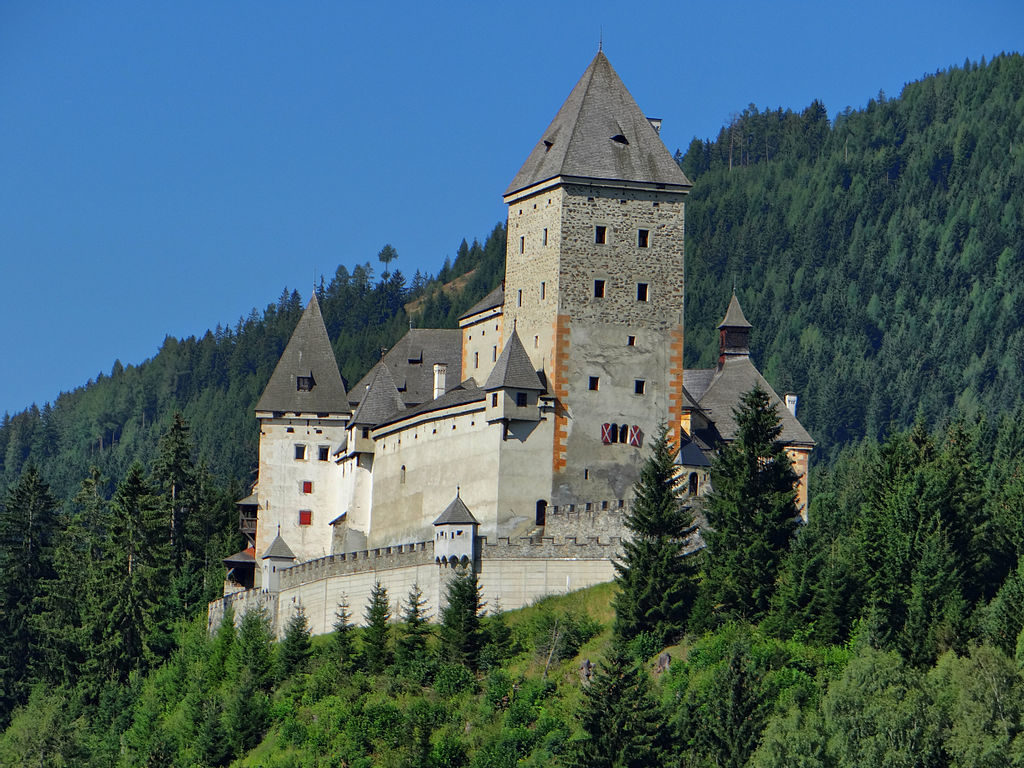
1. Moosham Castle, Austria
The Witches’ Castle was at the heart of one of the most brutal and bloody trials in history
With a history that stems all the way back to the 12th century, it’s no surprise that Moosham Castle has a past that would send shivers down any spine.
Popularly known as the Witches’ Castle, Moosham was home to some of the darkest moments in Austrian history. Between 1675 and 1690, its spooky walls were at the heart of the Salzburg Witch Trials, where those accused of witchcraft were tried, tortured and condemned. Over the 15 years of trials, more than 130 people were condemned to death, while countless more suffered horrific torture, brutality and abuse at the hands of their captors.
Curiously, most of the people tried and accused of witchcraft were men, and the accusers weren’t particular about who their accusations fell upon – those who were executed varied from ten years old all the way up to 80. Arguably those that weren’t executed faced a worse fate than those who were killed. Thousands were tortured, each branded with a poker-hot iron that scarred them for life. Until their dying day, they were marked as a witch. Other torture methods involved chopping off the hands of those accused. The lucky ones would be those that were burnt at the stake – whether alive or already dead from the cruelty that was inflicted upon them.
Most of those accused of witchcraft were beggars, paupers and the homeless. One particular beggar, a 12-year-old boy, became known as Wizard Jackl. The government fiercely hunted him after he disappeared following the execution of his mother in 1675. Despite hearing rumours of the boy’s death two years later, the government rounded up his friends on the streets under the accusation that they’d been taught black magic by their long-gone friend. Under torture, the children told tales of Jackl’s power and barbarity, claiming that he could make himself invisible, eventually convincing the government that they’d rather not find the boy.
Horrifically, Moosham’s connection to the Salzburg Witch Trials isn’t the only mystical experience. In the 1800s, hundreds of deer and cattle were found dead all around the castle. Naturally many residents leapt to the conclusion that werewolves were responsible for their deaths, and several castle residents were tried and executed under the pretence that they were werewolves.
To this day, the castle is host to several paranormal presences. Those who have visited the castle claim to have felt someone breathing on them, while others claim to have been touched by some invisible being. More frequently, bangs, footsteps and apparitions have been reported.
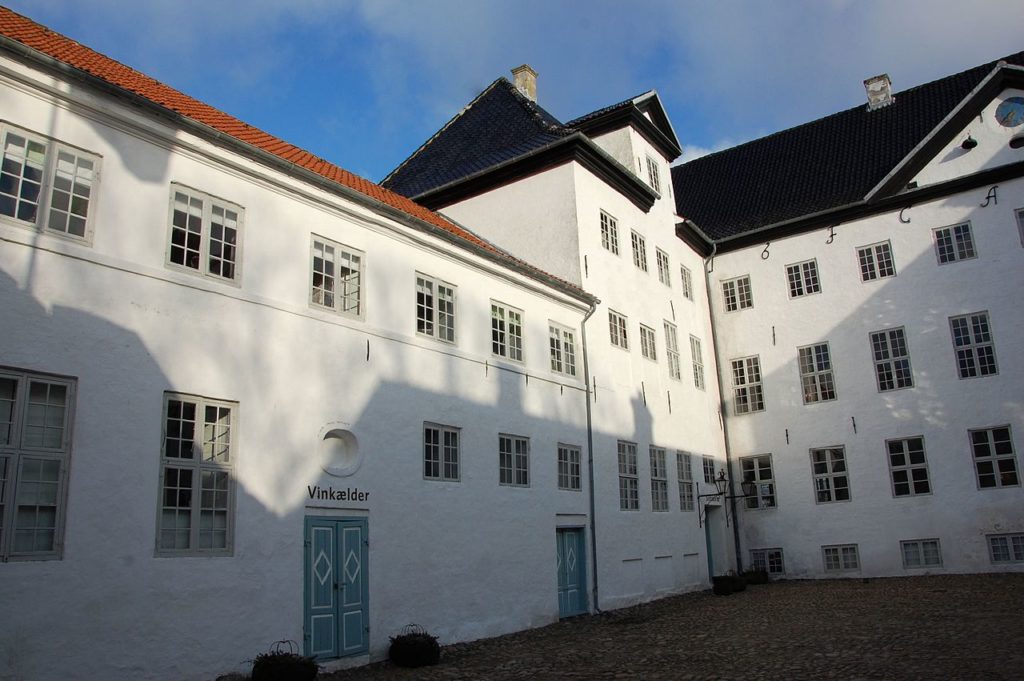
2. Dragsholm Castle, Denmark
One of Denmark’s oldest castles is home to more than 100 ghosts
Built in about 1215 by the Bishop of Rosilde, Dragsholm Castle’s history is as rich and interesting as it is morbid. During the Middle Ages, the castle was overhauled and fortified, making it the strongest castle in Denmark at the time. As a testament to its strength, it stood resolute against the fiercely destructive armies of Christoffer, Count of Oldenburg, during the Count’s Feud of 1534-36.
After the Reformation that followed, Dragsholm Castle fell into the hands of the state, where it was transformed into a prison for noble and high-ranking prisoners. Here, each prisoner received a cell that was built especially for him or her, while the cells in the northeast tower of the castle were equipped with toilets and even windows.
Perhaps the most infamous prisoner of Dragsholm Castle was James Hepburn, 4th Earl of Boswell and the third husband of Mary, Queen of Scots. Caught in Norway in 1573, the Earl found himself transported to Dragsholm on the order of King Frederik II of Denmark. Here, he was tied to a pillar, provided only enough food and water to keep him alive, and left. It’s alleged that he went insane, dying almost five years after he was captured. It’s said that his ghost still haunts the castle, with witnesses claiming to have seen the disgraced Earl of Boswell riding into the courtyard on his horse and carriage, the sound of the horses’ hooves audible across the castle.
As well as James Hepburn, there are apparently more than 99 other ghosts that frequent the castle’s hallways. The Mad Squire, a noble-born Dane who died at the castle, has been heard moaning from the dungeons of the castle, while there are two ladies who haunt the corridors, one a disgraced daughter of a noble, the other a grateful worker. The Grey Lady, who had worked in the castle for years, went to work one day complaining of toothache. Her master had given her some relief for the pain, but tragically the woman died. Yet thankful for the help he had offered her, she stuck around.
The White Lady, however, met her maker after disgracing her father. Calina Bovles, the daughter of a noble, had fallen in love with a mere commoner and had become pregnant with his child. As evidence of her liaison grew, her father realised the atrocity that she had committed. He locked her in a room until she died. Incidentally, the skeleton of a woman wearing a white dress was uncovered in the 20th century during renovations.
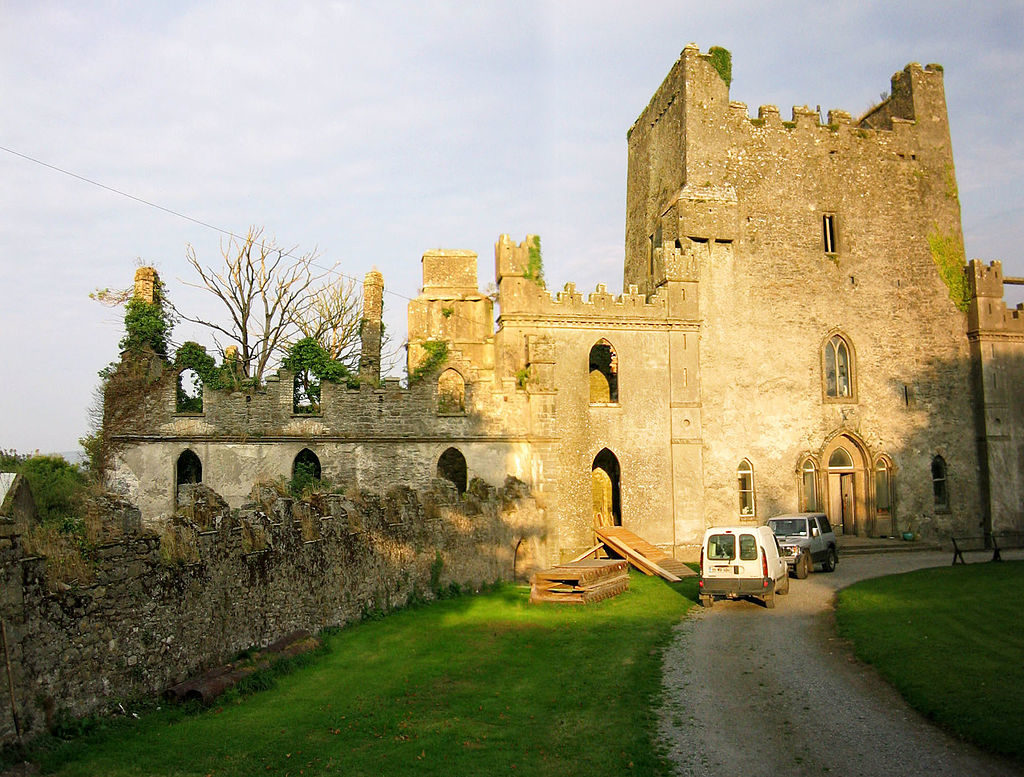
3. Leap Castle, Ireland
A family feud gone wrong left Leap Castle as the most haunted site in Ireland
Claimed to be the most haunted site in all of Ireland, Leap Castle hides a dark and treacherous past behinds its walls. Allegedly build on the site of a druid initiation site, which was chosen for being the crossing of two Ley lines, it’s claimed that the barrier between the physical and spiritual realms are particularly thin here, resulting in paranormal activity that exaggerated the aura – both good //and// bad.
Even before it was built, the castle was bathed in blood, condemning the site to negative paranormal activity. Originally built by the O’Bannon clan in the 13th century, the family was in the midst of a dilemma – two brothers contested each other’s claim as chieftain. To solve the issue, both brothers jumped into a rocky gorge, the survivor taking the title.
Merely 200 years later, the Earl of Kildare attempted to seize the castle several times, the last attempt succeeding in destroying part of it. The castle soon landed in the lap of the O’Carroll clan. The O’Carrolls, too, were engaged in a serious sibling rivalry. Following the death of the chieftain, Mulrooney O’Carroll, in 1532, the two sons had feuded over the right to lead. One a warrior, the other a priest, both claimed that it was their right. One day, as the priest held mass for some family, his brother stormed in. Outraged that the priest had started the mass before all the family had arrived, he leapt towards the priest and plunged his sword straight through his heart. The priest collapsed over his alter, soaking it in his blood. For years afterwards, and still to this day, the ghost of the priest brother has often been seen around the chapel.
It’s not just the priest whose spirit remains at Leap Castle. The ghosts of two young girls have been spotted at the site. Usually seen playing together, others have reported to have seen one of the girls falling from the battlements, while the other has been seen dragging a deformed leg behind her. These sisters, Emily and Charlotte, were thought to have lived there in the 1600s.
More inexplicable, perhaps, is the hybrid phantom that roams the grounds. Apparently a big as a sheep, but with the face of a human, this demon emits the foul stench of rotting flesh. If that’s not bad enough, in place of eyes, the demon has empty, black pools. Nobody can explain its terrifying presence, but it has since been named the Elemental, and some theories claim that the spirit hearkens back to the druids. Thankfully it’s said that the Elemental doesn’t appear unless you provoke it.
Even today, the castle’s current owner, Sean Ryan, reports curious goings on. Currently undergoing renovations Sean has reported ladders being pushed from walls, as well as other unexplained accidents that have resulted in broken limbs.
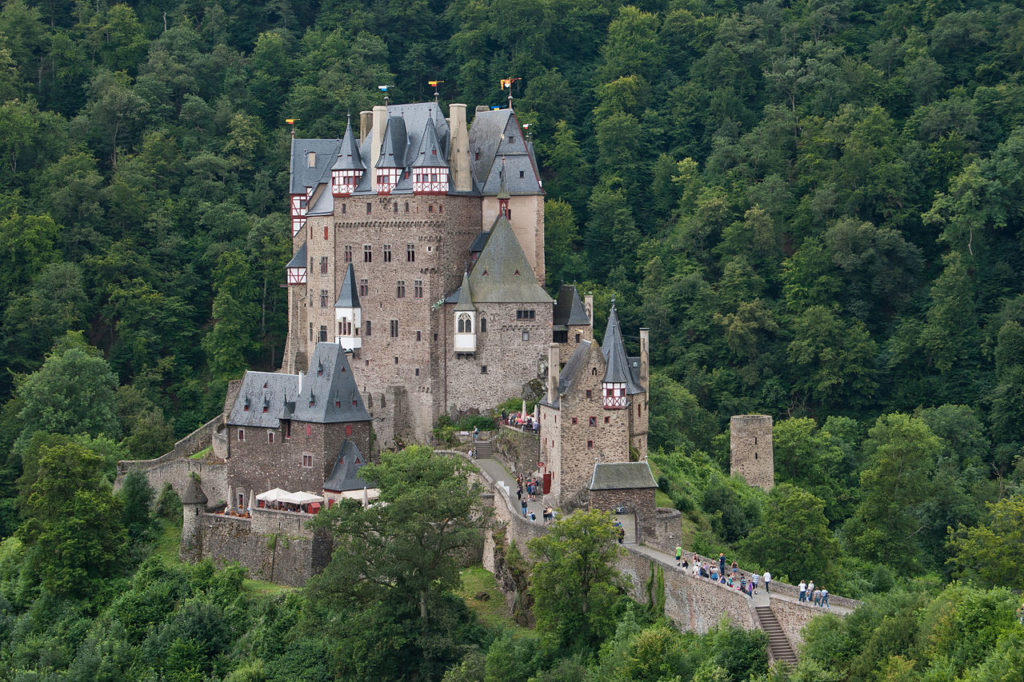
4. Eltz Castle, Germany
The ghost of Agnes Eltz paces the castle grounds, a defender of her home until her death and beyond
If you visit the 12th-castle at Eltz, you’ll have to pass through the guarded gates at its entrance. This guard, though not visible to all, has paced the grounds of Eltz since her brutal death centuries ago.
Owned by the same family that built the fortress 33 generations ago, the castle was home to a young lady named Agnes Eltz. A daughter among many sons, Agnes grew up pretending to be a warrior with her brothers rather than a princess. But like may girls of her age and status, Agnes was destined for an arranged marriage from a young age. Her parents’ spouse of choice was the Knight of Braunsberg. The pair met several times, but the young girl dismissed him as boring and chose to ignore him. One day, infuriated by her lack of interest, the knight grabbed Agnes and forced himself upon her. Outraged, Agnes pushed him away and slapped him round the face – a great embarrassment for her family. The knight’s patience had worn thin, and her slap pushed him over the edge. He stormed out of Eltz Castle, vowing revenge for her devious behaviour.
For months the Eltz family lived in fear of an attack – but it didn’t come. Lulled into a sense of security, the family resumed their usual lives. But the knight hadn’t forgotten. For months he stewed in his resentment, plotting how to take revenge on the slight of Agnes. One day, when the Eltz men went out hunting, Braunsberg and his soldiers stormed the castle, killing the guardsmen and attacking anyone in sight. Agnes, more the brave soldier than a fragile maiden, leapt into action, donning her brother’s suit of armour and storming out to attack the knight. Braunsberg fought back, dealing her a fatal blow to the chest. It was only after the battle that the knight realised that the ferocious warrior he’d killed was his own betrothed. He fled.
As the ghost of Agnes defends her castle, people have reported a phantom horseman riding outside the castle gates – the apparition of the Knight of Braunsberg, seeking forgiveness from the woman he murdered.
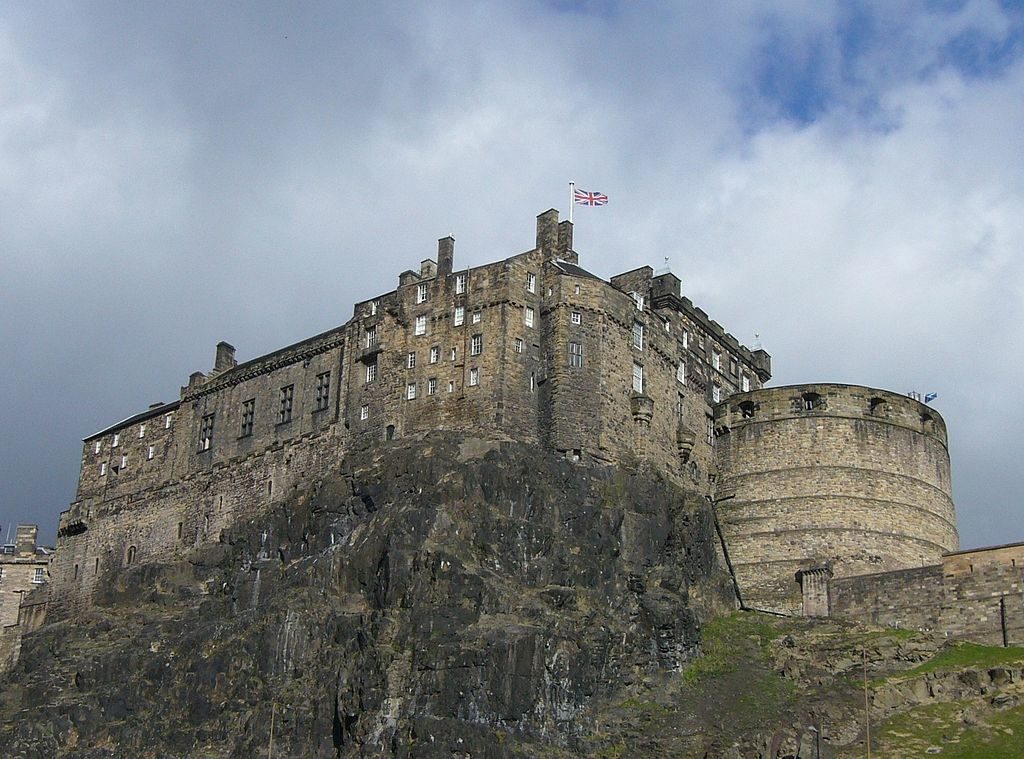
5. Edinburgh Castle, Scotland
Considered one of the most haunted locations in the UK, Edinburgh Castle is home to several spectres
Set foot in the grounds of Edinburgh Castle and you might hear the soft, lilting whistle of pipes, seemingly playing from right beneath your feet. This tune is apparently the haunting memory of the Lone Piper, who disappeared on an errand hundreds of years ago. Upon discovering secret tunnels underneath the castle, a young boy was sent to investigate them. Instructed to play his pipes continually, the piper stepped into the tunnels, his pipes a sign of his progress. When his music suddenly stopped, a search party was released – but there was no sign of the boy.
Just one of the many ghosts to haunt Edinburgh castle, it is no wonder the area is considered to be so haunted. The site where Edinburgh Castle stands was inhabited long before the chapel dedicated to Saint Margaret was built in the 12th century. As long ago as 850 BCE, the area has been home to settlements, with a defensive fortress standing during the Iron Age. The castle that now stands features buildings constructed between the 12th and 18th century, but while it started life as a royal residence, it was later turned into a prison and an army garrison. Its dungeons, however, led the castle to notoriety. Here, prisoners were kept tucked away and often forgotten about.
These forgotten prisoners often appear to visitors in the form of cold spots, shadows and unexplained moving objects. Another common spectre is the headless drummer boy, who appears when the castle is facing danger – the first reporting of the boy was in 1650, before Cromwell attacked the castle. The castle is also allegedly haunted by dogs, whose phantom forms roam the dog cemetery.
An investigation launched by Dr Wiseman of the University of Hertfordshire in 2001 confirmed that there were some peculiar goings-on at Edinburgh Castle. Over the course of ten days, 240 volunteers with no knowledge of the castle’s paranormal history were sent into both haunted and unhaunted areas of the castle with equipment to detect or record evidence of their experiences. The results were incredible – apparitions were spotted, and some sceptics reported that there was some kind of physical contact in the vaults and tunnels. Dr Wiseman, who had previously claimed that he didn’t “believe” in ghosts, explained ambiguously, “I’m closer to being a lot more curious.”
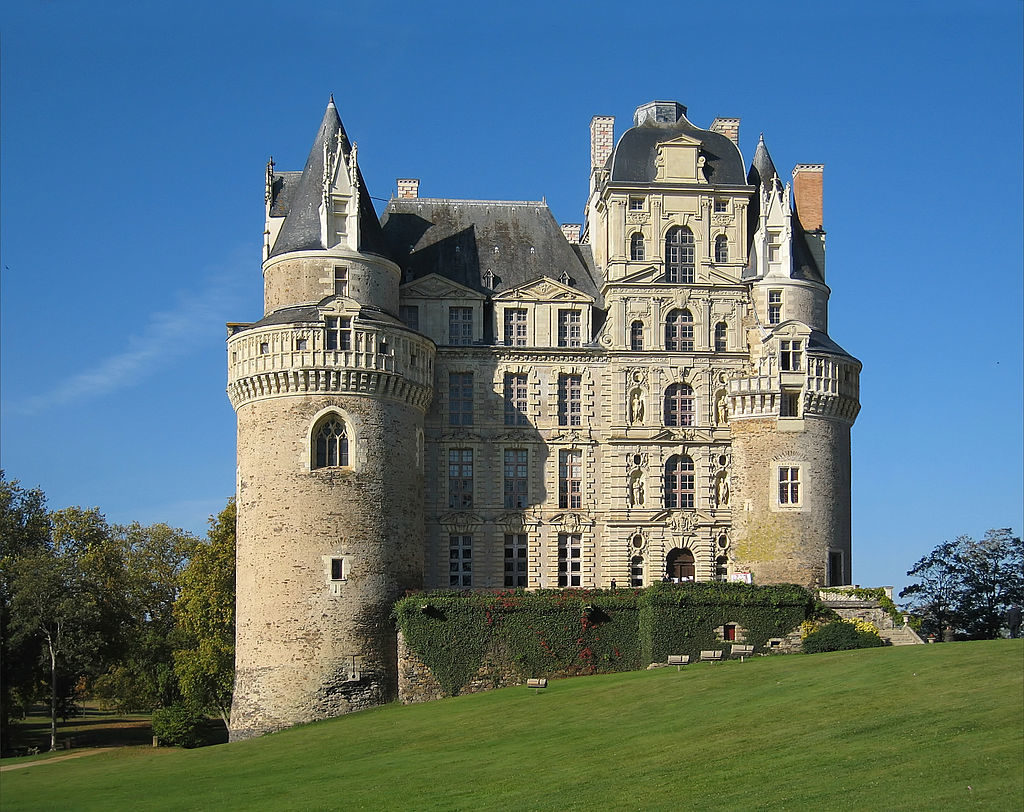
6. Château de Brissac, France
The screams of Charlotte de Brezé and her lover haunt the corridors of Chateau de Brissac
The gloriously ornate chateau of Brissac has dominated the Loire Valley for centuries. Built initially as a castle in the 11th century, it was rebuilt in the 1400s, and then again in 1611. It is this 17th-century style that we see today, commissioned by the first Duke of Brissac, Charles II de Cossé. However, behind this impressive Baroque façade, the hidden secrets of the château’s tragic past are kept.
A double murder that took place in the 15th century has haunted residents of the castle, with the vision of the ‘Green Lady’ terrifying visitors. After the chateau was rebuilt in the 15th century, Jacques de Brezé, the son of the man that commissioned the redesign, inherited the building. Jacques had married a woman named Charlotte, the favoured illegitimate daughter of Charles VII of France. Yet their marriage had not been a happy one. Despite having five children together, Charlotte’s eye wandered, landing upon her husband’s huntsman, Pierre de Lavergne. A frenzied affair began, with the lovers’ moans of pleasure reverberating around the chateau.
According to legend, Jacques walked in on his wife and her lover intertwined. It was the final straw. Here, records become murky. Some claim that the lovers were murdered on the spot, over one hundred blows from Jacques’ sword delivering them to their messy deaths. However, others claim that Jacques waited, instead murdering the pair separately. In this story, it’s alleged that Charlotte was killed in the chateau’s chapel, brutally strangled by the cuckold.
Upon hearing of his half-sister’s murder, King Louis XI flew into a rage. Jacques was arrested and sentenced to death, while all of his property and land was seized from him. Yet before Jacques met his end, Charles VIII, the successor of Louis XI, overturned the accusation and Jacques was returned his property.
To this day, the ghost of Charlotte has been spotted roaming the tower in the chapel. Known as the Green Lady, her apparitions have terrified visitors, as it’s claimed that half of her face has already rotted away, a blackened corpse with empty eye sockets and no nose. Those that have been (un)fortunate enough to stay in one of the suites that are available to overnight guests have remarked that they’ve heard dying screams and moans of the murdered couple along the corridors in the early hours of the morning.
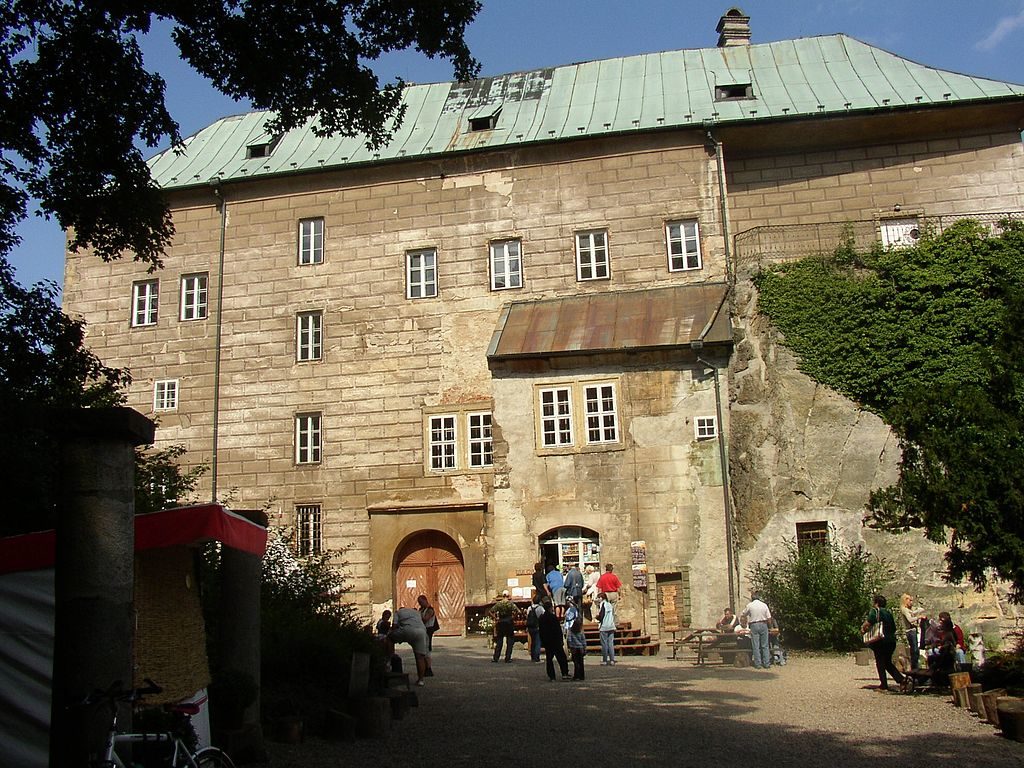
7. Houska Castle, Czech Republic
Built in the middle of nowhere, with no access to water and seemingly no purpose, Houska Castle hides a very sinister secret
About 50 kilometres away from Prague in the Czech Republic, stands a castle that seemingly serves absolutely no purpose. Houska Castle was built in the 14th Century by the Bohemian ruler, Ottokar II. The castle changed hands several times, enjoying a Renaissance redesign in the late-16th century, before falling into disrepair in the 18th century. By the 20th century, the curious legend of Houska Castle had attracted the attention of one very particular group of people: the Nazis.
Unlike other fortresses of the period, it wasn’t meant to house the king. The castle wasn’t near any trading route, and there was no access to water. Defences were built inside the castle rather than outside – instead of keeping people out, it seemed like the castle was meant to trap something else in.
According to lore, this apparently pointless construction was, in fact, built over the gates of hell. A bottomless hole had existed at Houska for centuries, a gateway for demons and evil beings to enter Earth and terrorise people. The area has long been avoided by locals, and even to this day the castle is given a wide berth, with only the inquisitive daring to set foot in Houska Castle.
Above this fateful hole stands the chapel, dedicated to none other than the leader of God’s army, Archangel Michael. The chapel itself is remarkable for more than just its guarding presence. Frescoes decorate the walls – but their gory tales give an insight into what lurks below, with left-handed demons clawing their way out of the scenes.
However, before the chapel’s construction, the hole was involved in some sinister experiments. Attempts were made to fill the hole with rocks, but no matter how many rocks were thrown in, the hole never seemed to fill. It’s alleged that one duke was keen to get to the bottom of the hole’s mystery. He summoned prisoners who had been condemned to death and offered them a full pardon if they agreed to be lowered into the hole. Many agreed, expecting to escape with their lives. They were mistaken. There was silence as one man was lowered down. Moments later, his uncontrollable screams echoed up from the depths of the hole. As he was hauled back out, they discovered his hair had turned white and he’d aged several decades. They never found out what was in the hole – it drove the prisoner to madness, and he died days later.
Houska Castle is home to many more secrets than the gates of hell, however. Many visitors claim to have experienced supernatural encounters, from the ghost of a woman that stalks the corridors, to curious animal-like presences.
It’s these stories and supernatural sightings that struck a chord with the Nazis. From 1939 to 1945, Houska Castle was home to multiple occult experiments, but records were destroyed and it’s not known exactly what happened here. However, several skeletons of Nazi officers were discovered during renovations. Their own comrades had executed them.
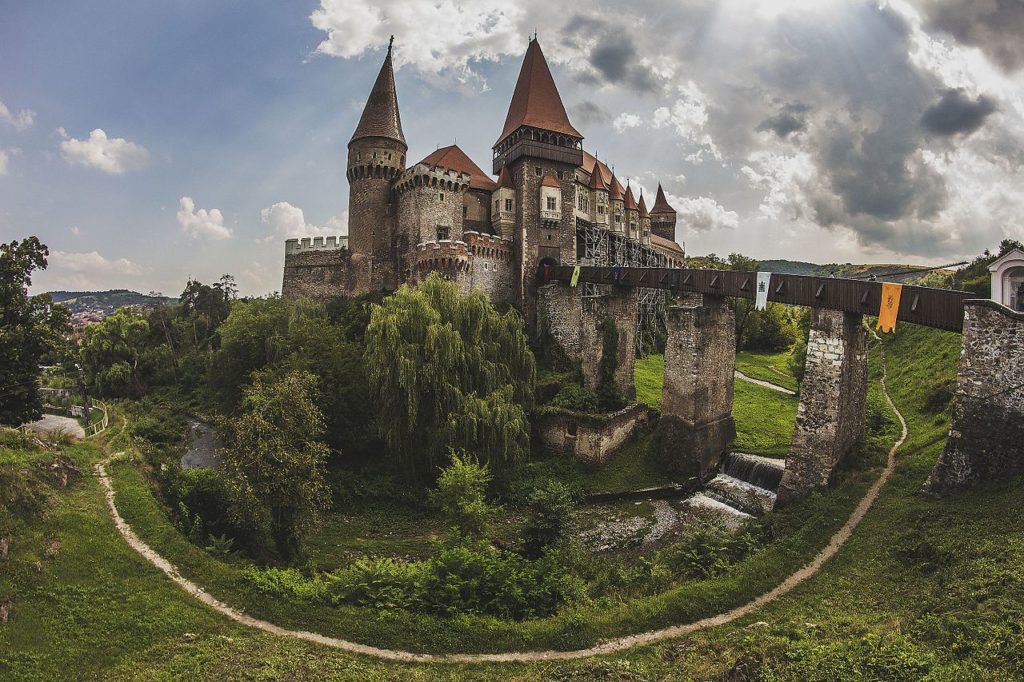
8. Corvin Castle, Romania
One of the fortresses to have inspired Bram Stoker’s Castle Dracula, Corvin is home to even darker tales
The truth about the history of Transylvania’s Corvin Castle can be hard to pin down. Steeped in creepy lore and lurching legend, perhaps its most famous connection is to Vlad the Impaler, Romania’s ruthless 15th-century prince of Wallachia. The prince was known for his trademark move, impaling his enemies on stakes, which was perfected while pursuing control of Wallachia. The region had been wrested from his father by nobles who assassinated him while Vlad and his younger brother were away at the court of Ottoman Sultan Murad II, as collateral to their father’s support for Ottoman policies.
While many will know Bran Castle as the reputed home of Vlad the Imapler, Corvin’s link to the famous inspiration for Dracula is also a difficult one to verify. The popular story goes that Vlad, imprisoned in the castle’s dungeon for years, was driven insane there, and became darker in his thoughts than ever before. It has never been proven, however, that the prince was actually imprisoned there, but it is thought more likely that if he were, it was only for a few months. Either way, the dungeon Vlad would have stayed in is open for visitors.
Along with this mystery the castle holds plenty more spooks, from a torture chamber (complete with waxworks demonstrating the use of its gruesome instruments), to a deep well with a chilling tale of its own. Legend has it that three Turkish men imprisoned at the castle built the well. Iancu of Hunedoara, the castle’s owner, told them that if they struck water, they would be freed. They did, and while Hunedoara had his well, he still did not grant them freedom. One of the prisoners reportedly wrote the message: “You now have water, but you don’t have a heart” to their host on the side of the well wall.
For more incredible fortresses, castles and royal residences, subscribe to History of Royals and get every issue delivered straight to your door.
